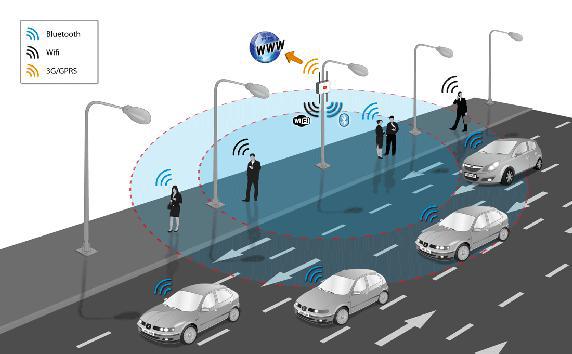With the emergence of linked and autonomous cars, transportation is going through a significant change. In order to enable smart transportation systems, advanced connectivity is essential. Light Communication for transportation infrastructure may be improved with the help of LiFi (Light Fidelity), a wireless technology that connects via visible light. In this blog, we’ll examine how LiFi’s lightning-fast, dependable, and secure wireless connection might transform transportation, automobiles, aviation, as well as other industries.
How LiFi Technology Works
High-speed data transmission is achieved by LiFi using visible light at 400–800 THz. Information may be encoded in LED bulbs by modulating them quickly at a pace that is undetectable to the human eye. The signal is received by a photoreceptor, or light sensor, which then transforms it back into data. Similar to WiFi, it has complete bidirectional networking capabilities. However, it offers two main benefits:
- Extremely fast speeds: in lab settings, it can reach 224 Gbps, while in real-world installations, it can reach 1 Gbps. This outperforms the fastest WiFi speeds by almost a factor of 100.
- Improved security: Since light cannot pass through barriers that confine a transmission to a certain region, eavesdropping is practically impossible.
It uses reflected light and line-of-sight to deliver localized connections. High-speed, smooth connection is made possible by integration at the LED as well as chipset levels.
LiFi for Smarter and Safer Roads
LiFi’s quick vehicle communication has the potential to revolutionize road infrastructure. The following are some important applications:
1. Enhanced Traffic Management
LED streetlights can offer high-speed communication across highways via it. This makes it possible to adjust signals dynamically and analyze traffic in real time to maximize traffic flow. To increase traffic safety, critical alerts may also be quickly distributed to linked cars.
2. Secure V2X Communications
LiFi can facilitate vehicle-to-everything (V2X) connectivity, which is essential for autonomous driving and has to be fast, dependable, as well as secure. Unlike WiFi, V2X over LiFi removes interference with onboard systems. Transportation infrastructure as well as vehicle networks are protected against distant hacking via localized networks.
3. Intelligent Transportation Lighting
LiFi makes it possible for traffic signals and LED streetlights to become intelligent Internet of things devices. In addition to providing lights, they may control parking, identify empty spaces, as well as monitor pollution. Transportation management systems can get this data thanks to LiFi connection.
4. Enhanced Control for Emergency Vehicles
LiFi offers emergency vehicles a quick and safe way to manage traffic. When granting priority access on demand, traffic signals may be swiftly disregarded without compromising data security.
How LiFi Can Transform Aviation
LiFi offers confined, fast, interference-free, as well as secure networks, which makes it useful for airline connection.
1. Safer Inflight Connectivity
WiFi networks in aircraft have the potential to disrupt avionics systems. LiFi makes in-flight communication safer by removing electromagnetic interference. It also improves aviation network cybersecurity.
2. High-Speed Connectivity Across Airports
Passengers may enjoy interference-free, lightning-fast access via LiFi networks across airplane terminals. It also makes it possible for telemetry data from smart baggage and airline IoT devices to be transmitted quickly.
3. Enhanced Navigation and Spatial Awareness
Aircraft LED systems can incorporate LiFi. It makes real-time navigation data transfer possible. Improved automatic guiding is made possible by the ability of LiFi equipment placed in taxiways as well as runways to exchange spatial info.
4. Efficient IoT Connectivity on the Ground
High-speed connectivity at the gate is made possible by LiFi incorporated into ground support equipment. IoT airplane turnaround systems may be used more effectively with fast data connections.
Conclusion
We have covered LiFi, a cutting-edge technology, and also how Lifi works that has the potential to revolutionize aviation, road infrastructure, as well as vehicle communication. It offers a huge chance to allow future smarter land and air transportation systems because to its capacity to create ultra-fast, secure, and confined wireless networks. LiFi is accelerating its development to propel the next phase of connected mobility.















